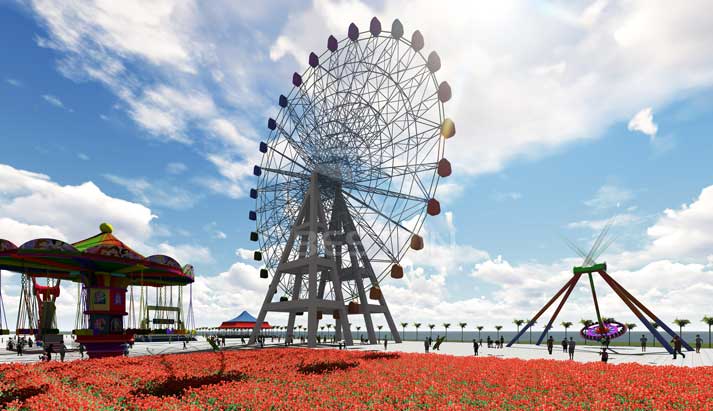Amusement parks, with their colorful rides and lively atmosphere, have long been synonymous with family fun and entertainment. Among the iconic attractions that draw visitors of all ages is the Ferris wheel, a towering structure that offers breathtaking views and a sense of adventure. If you’re considering adding this classic ride to your amusement park, one of the crucial factors to explore is the cost associated with acquiring a Ferris wheel.
1. Determining the Type and Size
The cost of a Ferris wheel can vary significantly based on its type and size. Ferris wheels come in different configurations, from compact models suitable for smaller parks to massive observation wheels designed for major attractions. The number of passenger cabins, the height of the structure, and the overall engineering complexity contribute to the pricing. As a park owner, you must carefully assess your space availability and target audience to determine the appropriate size and type of Ferris wheel from www.Bestonamusementrides.com for your park.
2. Quality and Design Features
The quality of construction materials and design features play a pivotal role in the overall cost of a big Ferris wheel and kiddie ferris wheel rides for sale. High-quality materials, advanced safety features, and innovative design elements can contribute to a higher upfront cost. However, investing in a well-designed and durable Ferris wheel ensures a safer and more enjoyable experience for park visitors. Consider consulting with reputable Ferris wheel manufacturers who prioritize safety standards and offer customization options to align with the theme of your amusement park.
3. Installation and Site Preparation
Beyond the cost of the Ferris wheel itself, park owners need to budget for installation and site preparation. Ferris wheels require a sturdy foundation to ensure stability and safety. The cost of preparing the site, including any necessary excavation, foundation construction, and infrastructure development, should be factored into the overall budget. Additionally, expenses related to professional installation services, such as crane rental and assembly labor, contribute to the total investment. Collaborating with experienced contractors can streamline the installation process and help manage associated costs.

4. Maintenance and Operational Expenses
Owning a Ferris wheel involves ongoing maintenance and operational expenses. Regular inspections, routine maintenance, and compliance with safety regulations are essential for ensuring the longevity and safety of the ride. Budgeting for spare parts, inspections by certified engineers, and staff training contributes to the overall cost of ownership. Operational expenses, such as electricity to power the Ferris wheel and staffing for ticket sales and ride operation, should also be considered in the financial planning.
In conclusion, the cost of buying a Ferris wheel for your amusement park extends beyond the initial purchase price. Careful consideration of the type, size, quality, and design, coupled with budgeting for installation, site preparation, and ongoing maintenance, is crucial for making a well-informed investment. While the upfront costs may seem substantial, the joy and excitement a Ferris wheel brings to your park can make it a valuable addition, enhancing the overall experience for your visitors and ensuring the long-term success of your amusement venture.